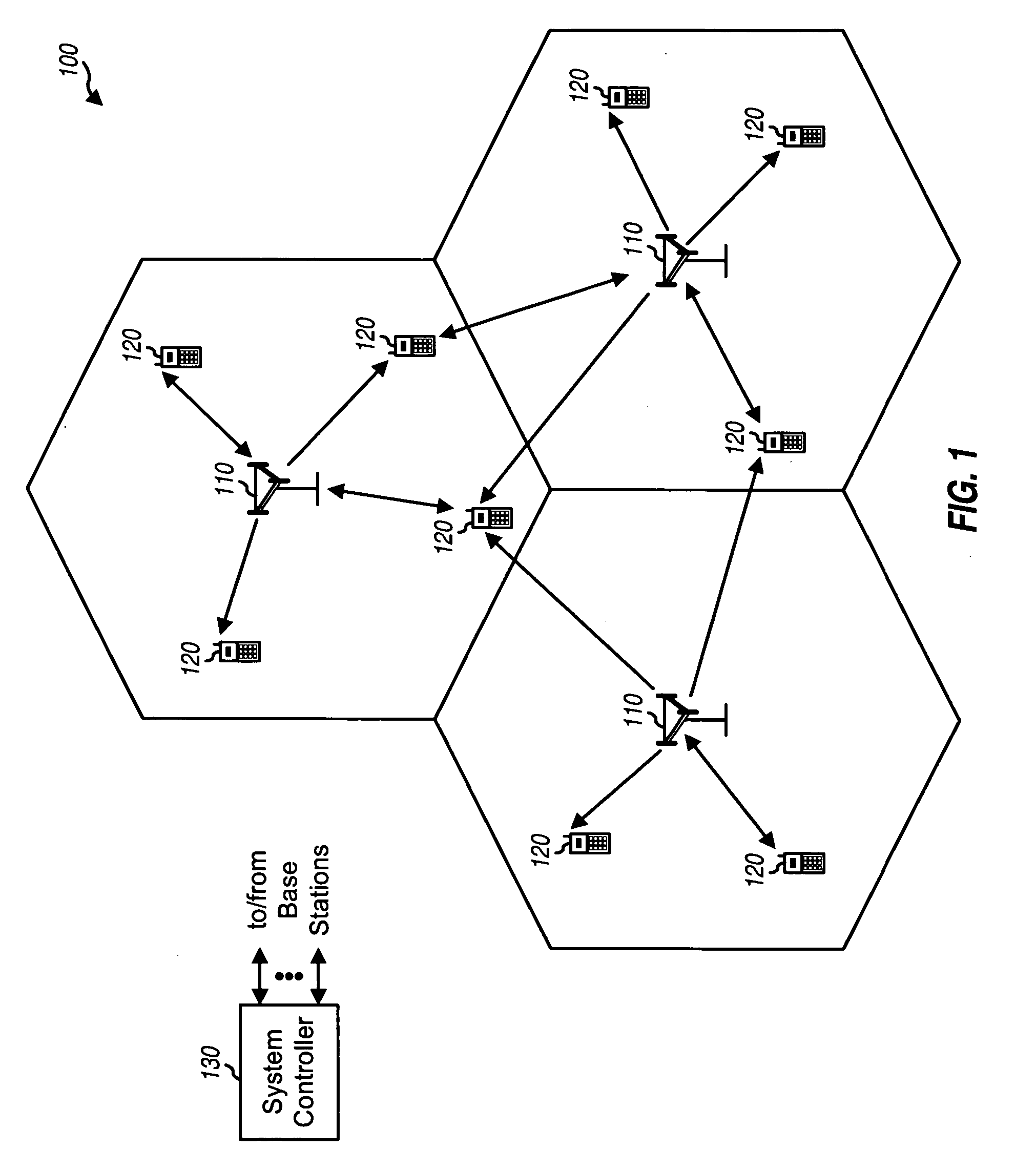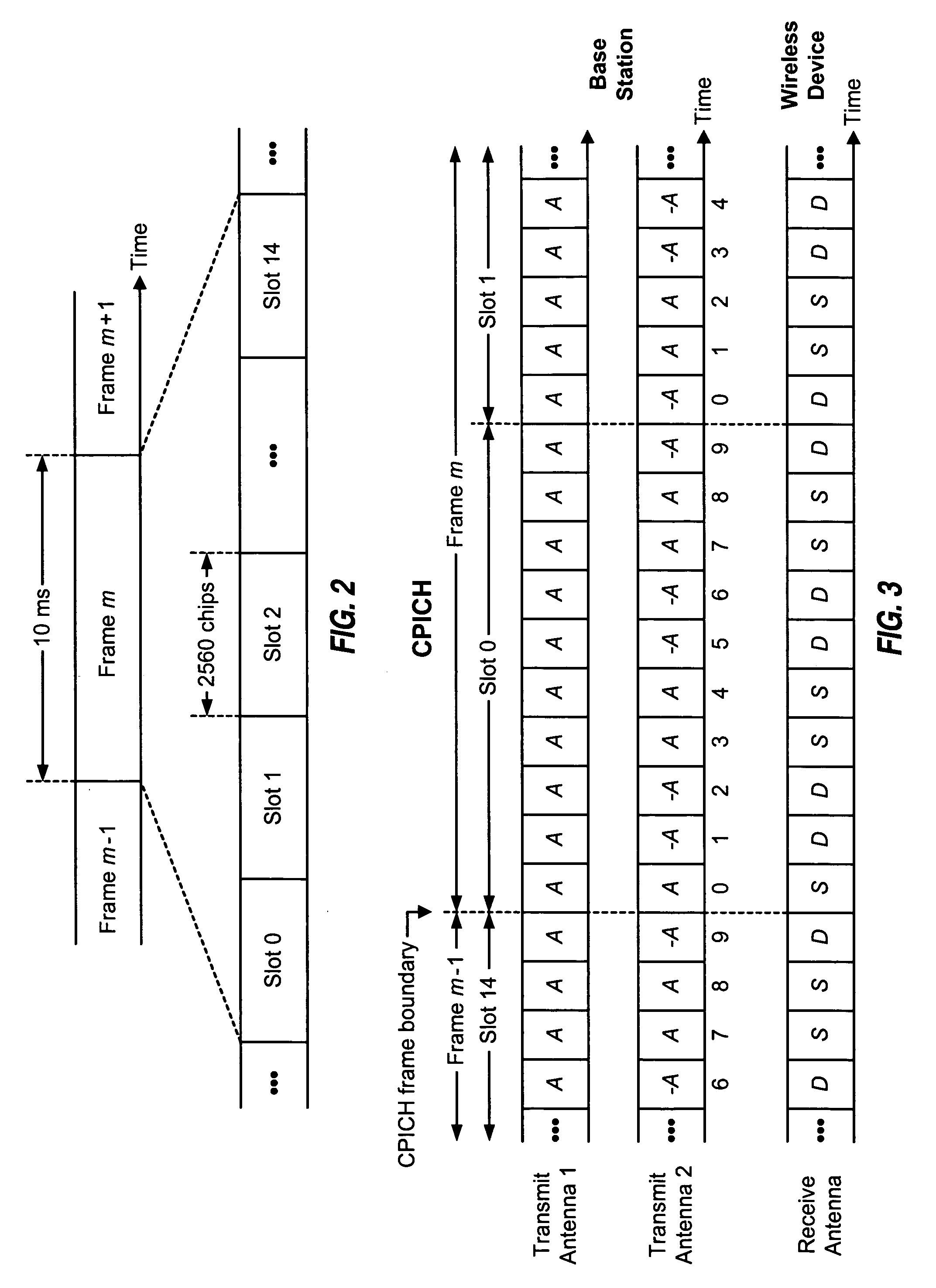Quick detection of signaling in a wireless communication system
a wireless communication system and signal detection technology, applied in the field of communication, can solve the problems of reducing the available battery power, wasting battery power, and wasting battery power, so as to prolong the battery standby time, reduce the warm-up time, and reduce the power consumption of the battery
- Summary
- Abstract
- Description
- Claims
- Application Information
AI Technical Summary
Benefits of technology
Problems solved by technology
Method used
Image
Examples
Embodiment Construction
[0034] The word “exemplary” is used herein to mean “serving as an example, instance, or illustration.” Any embodiment or design described herein as “exemplary” is not necessarily to be construed as preferred or advantageous over other embodiments or designs.
[0035]FIG. 1 shows a wireless communication system 100 with multiple base stations 110 and multiple wireless devices 120. A base station is generally a fixed station that communicates with the wireless devices and may also be called a Node B, a base transceiver subsystem (BTS), an access point, or some other terminology. Wireless devices 120 may be dispersed throughout the system. A wireless device may be fixed or mobile and may also be called a mobile station, a user equipment, a terminal, a subscriber unit, or some other terminology. A wireless device may communicate with zero, one, or multiple base stations on the downlink and / or uplink at any given moment. The downlink (or forward link) refers to the communication link from ...
PUM
 Login to View More
Login to View More Abstract
Description
Claims
Application Information
 Login to View More
Login to View More - R&D
- Intellectual Property
- Life Sciences
- Materials
- Tech Scout
- Unparalleled Data Quality
- Higher Quality Content
- 60% Fewer Hallucinations
Browse by: Latest US Patents, China's latest patents, Technical Efficacy Thesaurus, Application Domain, Technology Topic, Popular Technical Reports.
© 2025 PatSnap. All rights reserved.Legal|Privacy policy|Modern Slavery Act Transparency Statement|Sitemap|About US| Contact US: help@patsnap.com



